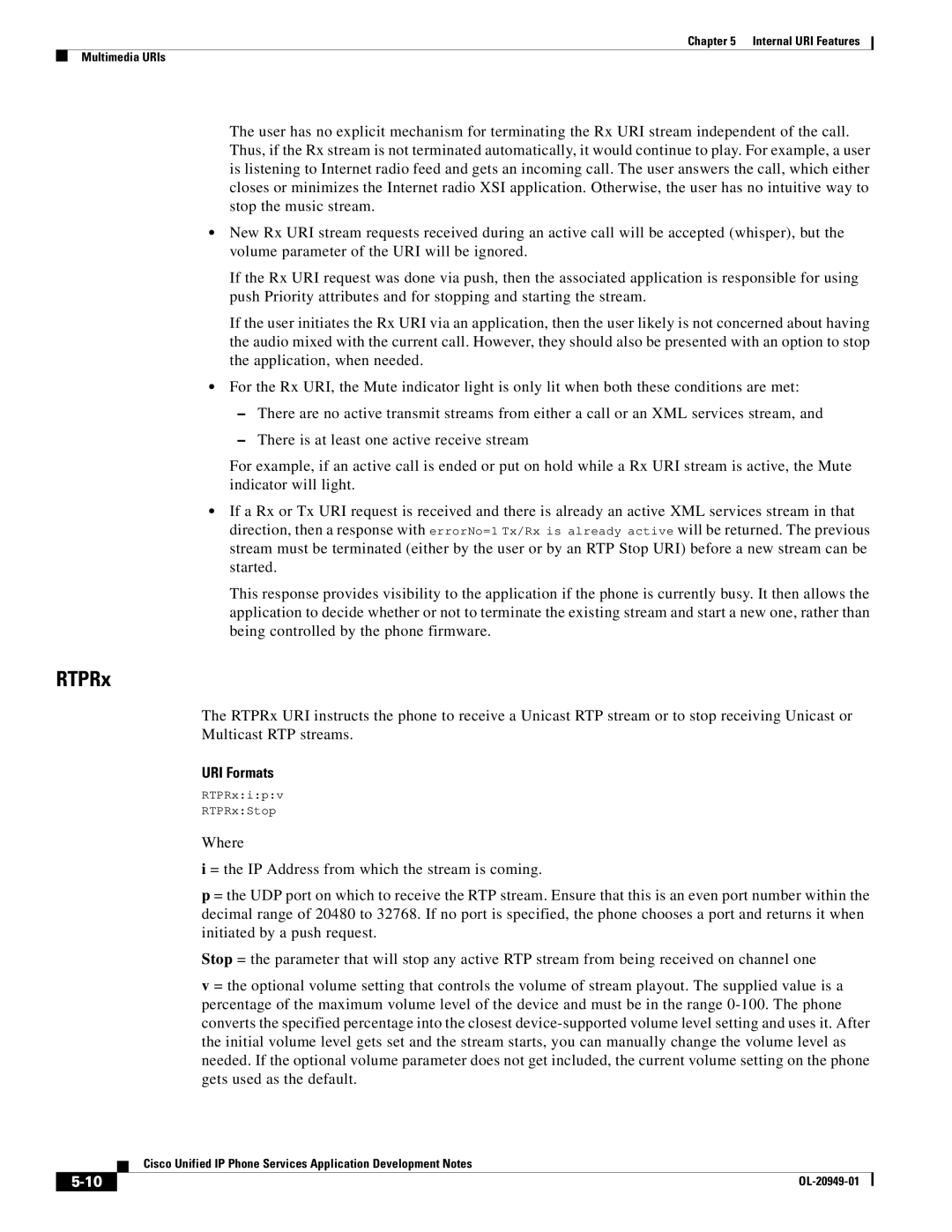
Chapter 5 Internal URI Features
Multimedia URIs
The user has no explicit mechanism for terminating the Rx URI stream independent of the call. Thus, if the Rx stream is not terminated automatically, it would continue to play. For example, a user is listening to Internet radio feed and gets an incoming call. The user answers the call, which either closes or minimizes the Internet radio XSI application. Otherwise, the user has no intuitive way to stop the music stream.
•New Rx URI stream requests received during an active call will be accepted (whisper), but the volume parameter of the URI will be ignored.
If the Rx URI request was done via push, then the associated application is responsible for using push Priority attributes and for stopping and starting the stream.
If the user initiates the Rx URI via an application, then the user likely is not concerned about having the audio mixed with the current call. However, they should also be presented with an option to stop the application, when needed.
•For the Rx URI, the Mute indicator light is only lit when both these conditions are met:
–There are no active transmit streams from either a call or an XML services stream, and
–There is at least one active receive stream
For example, if an active call is ended or put on hold while a Rx URI stream is active, the Mute indicator will light.
•If a Rx or Tx URI request is received and there is already an active XML services stream in that direction, then a response with errorNo=1 Tx/Rx is already active will be returned. The previous stream must be terminated (either by the user or by an RTP Stop URI) before a new stream can be started.
This response provides visibility to the application if the phone is currently busy. It then allows the application to decide whether or not to terminate the existing stream and start a new one, rather than being controlled by the phone firmware.
RTPRx
The RTPRx URI instructs the phone to receive a Unicast RTP stream or to stop receiving Unicast or Multicast RTP streams.
URI Formats
RTPRx:i:p:v
RTPRx:Stop
Where
i = the IP Address from which the stream is coming.
p = the UDP port on which to receive the RTP stream. Ensure that this is an even port number within the decimal range of 20480 to 32768. If no port is specified, the phone chooses a port and returns it when initiated by a push request.
Stop = the parameter that will stop any active RTP stream from being received on channel one
v = the optional volume setting that controls the volume of stream playout. The supplied value is a percentage of the maximum volume level of the device and must be in the range
| Cisco Unified IP Phone Services Application Development Notes |
